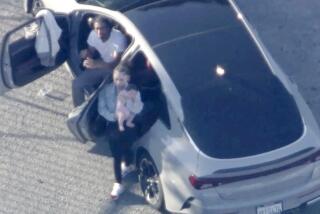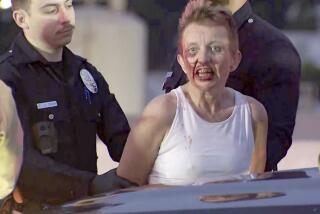No Consensus on Why People Try to Flee From Police
- Share via
It is the question that viewers of televised police pursuits have to ask as they watch yet another speeding driver desperately trying to outrun a squadron of police cars and helicopters:
What are these people thinking?
Sacramento County Sheriff’s Capt. John McGinness, a police pursuit expert, said even law enforcement officials haven’t figured out the answer. “The consensus is there is no consensus,” he said.
Research shows that motorists who put their life, limbs and liberty on the line--not to mention those of hundreds of others--usually flee after committing minor driving offenses. Their flight, which is inevitably futile, exposes them to much greater punishment than the original crimes.
“They are bad risk-takers,” said Adrian Raine, a psychologist and USC professor who specializes in criminal behavior. “They take some risks that they shouldn’t.”
In a 1997 federal survey of 146 prisoners in three states, more than half said they were willing to run from police at all costs. And 64% believed they would not be caught. (That the survey was taken behind bars suggests they were wrong.)
More than three in five drivers who flee are suspected only of misdemeanors. The most common offense triggering pursuits statewide from 1995 to 2000 was speeding, linked to 15% of all chases, according to California Highway Patrol records. The other crimes that sparked the most chases were car theft (11%), reckless driving (4%), drunk driving (4%) and failing to stop at a stop sign (3%).
Tanya Marie Ferguson, 29, epitomizes the small-time offender whose sudden decision to bolt only compounded her woes.
On the evening of July 16, Ferguson walked into a Stater Bros. store in Claremont with a teenage friend. A salesclerk saw Ferguson and the teen each walk out with a package of diapers without paying. In the parking lot, the clerk signaled a passing police car about the theft.
Ferguson jumped behind the wheel of her Jeep Wrangler. The vehicle was packed: The teenage friend had two children in the back seat and another adult friend had a third toddler in the vehicle. None of the children was strapped into child safety seats.
Ferguson gunned the engine and the chase was on.
For 45 minutes, Ferguson sped helter-skelter around Claremont at more than 90 mph, a caravan of police cars in tow. Two airborne television crews caught most of the chase for broadcast that evening.
When the Jeep ran out of gas on the San Bernardino Freeway, Ferguson jumped out and ran right into late-evening traffic before police finally forced her to the ground at gunpoint.
Had she given up at the market, the diaper theft and a charge of driving with a suspended license would have cost her a maximum of one year in jail and a $2,800 fine.
Instead, the unemployed high school dropout was charged with three felony child abuse counts and a felony evading arrest charge, to go with the original accusations. After tearfully pleading no contest to all charges last month, Ferguson faces a maximum of 10 years and six months in prison when she returns to court next month.
Why she ran remains unclear, even to her family.
Her mother, Patricia Ferguson, asked her daughter why she fled. Tanya couldn’t explain.
“She said she doesn’t know what she was thinking,” the mother said, adding: “Why would you do such a thing unless you were out of your freakin’ mind?”
More to Read
Sign up for Essential California
The most important California stories and recommendations in your inbox every morning.
You may occasionally receive promotional content from the Los Angeles Times.














